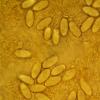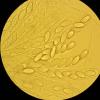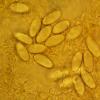
08-08-2014 22:46
 Zuzana Sochorová (Egertová)
Zuzana Sochorová (Egertová)
Good evening,today I collected this ascomycete on

08-08-2014 11:17
 Blasco Rafael
Blasco Rafael
Hola, a ver si me pueden ayudar, esta muestra la r

07-08-2014 19:26
Hi again I'd like your help with this small patel

08-08-2014 17:02
 Bernard Declercq
Bernard Declercq
Hi,Yesterday, I collected a Nectria-like ascomycet

06-08-2014 23:35
 Miguel Ángel Ribes
Miguel Ángel Ribes
Hi againThis cupulated yellow Hyalorbilia was rela

07-08-2014 13:51
 Andreas Gminder
Andreas Gminder
Dear friends, yesterday we found a small inop

03-08-2014 18:36
 Pablo Sandoval
Pablo Sandoval
Estimados,Ando en busqueda de literatura acerca de

06-08-2014 21:36
Marja PennanenHi,these are about 0,5 mm wide.The spores are abou
 Good evening,
Good evening,today I collected this ascomycete on horse dung. I though it was Thecotheus crustosus, but the reaction of asci is rather strongly dextrinoid in Lugol, not amyloid. Is it OK, or is it a different genus?
Apothecia up to 1 mm broad.
Microcharacters:
spores hyaline, ellipsoid, without guttules, smooth (observed in cotton blue), 18,5-21x8,5-9,5 micrometers, few spores extraordinary big-up to 24x13 micrometers (measured free spores in water), without apicles
asci 165-215x12-18,5 micrometers, containing 8 asci usually in one row
paraphyses hyaline, septate, 1,5-2 micrometers broad, apex up to 4 micrometers.
Z.
Je vous invite à regarder attentivement la coloration des asques sur les asques vides. Il me semble y voir du bleu ! Il s'agirait d'une réaction diffuse. Je pense en effet qu'il pourrait s'agir de Thecotheus crustaceus (Starb.) Aas & Lund.
Je vous envoie prochainement ma planche de dessins de la microscopie, faite à partir d'une récolte de 2012, sur excréments de cheval.
Cordialement et à plus
René

Effectivement, comme le pense René, il s'agit certainement de Thecotheus crustaceus. La réaction en bleu sur les asques n'est pas, je trouve, évidente sur ce genre; il m'arrive souvent de le constater.
Sur la deuxième photo les apothecies ressemblent bien également à T.crustaceus.
Michel.

thanks a lot for your comments and picture.
I saw there some blue structures, but I expected the most of blue colour at apexes of all asci.
Best regards, Zuzana






